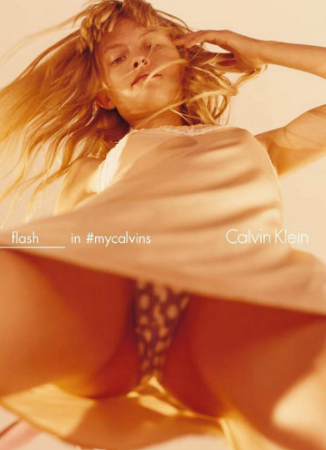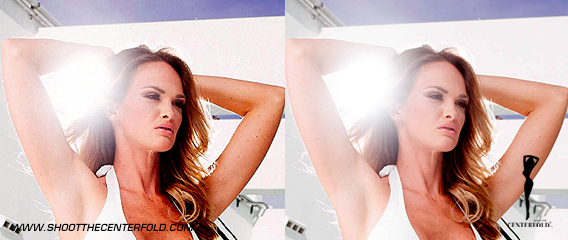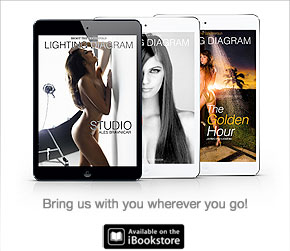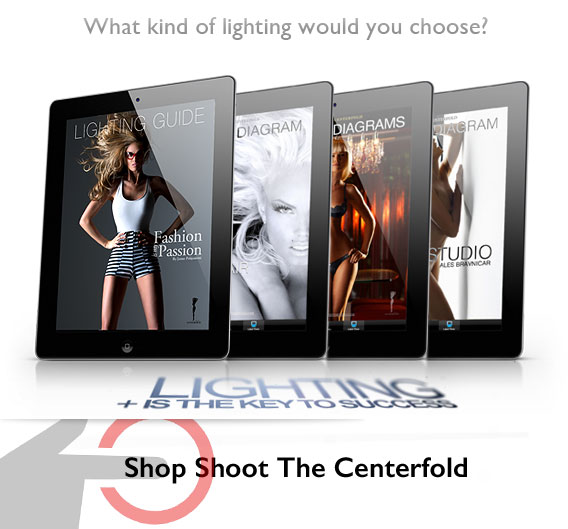Some Photographers Return to Film
The latest instalment of Calvin Klein‘s racy #MyCalvins campaign is hard to ignore, especially as the “upskirt” image of actress Klara Kristin sparked a social media firestorm last week. But amid charges of sexism and objectification, critics may be missing what is truly cutting-edge about the photo: namely, that it was captured on film, by rising photographer Harley Weir.
Weir, along with Jamie Hawkesworth, Colin Dodgson, Zoe Ghertner and others, is spurring a film renaissance in fashion photography. At a time when digital image-making is more pervasive than ever before — according to market research firm InfoTrends, 75 percent of photos are now taken with an iPhone — these so-called “digital natives” are opting to work with film.
“Fashion is rediscovering the possibility and the quality of film photography”“Fashion is rediscovering the possibility and the quality of film photography,” says Purple Magazine’s editor-in-chief Olivier Zahm, who dedicated his editor’s letter to the subject in the magazine’s most recent issue. “It is similar to what happened in music, with the resurgence of vinyl. Digital photography is sharper and cleaner; it captures a lot of information but it’s cold. Film gives you less information but it’s emotional information. And what do we care about, information or emotion? We care for the emotion. Film is very emotional. You can cry looking at a contact sheet, it is incredible.” Half of Purple’s Spring 2016 issue was shot on film and Zahm says he is continuing to push both himself and the photographers he works with to embrace the analogue medium whenever possible.
“I think [the move away from digital photography] is part of a backlash to what’s been going on in our culture, which is now so digitally savvy”“I think [the move away from digital photography] is part of a backlash to what’s been going on in our culture, which is now so digitally savvy,” says Jaime Perlman, creative director of British Vogue, another magazine that has embraced film photography, most recently in the May 2016 spread “Moonage Daydream,” lensed by Colin Dodgson. “There’s a purity to film. It’s refreshing.”
Aesthetically speaking, the rise of film photography is in line with an overall shift in fashion: Over the past several seasons, the sleek minimalism of the 2000s has given way to a more eclectic, DIY and retro-inspired approach popularised by brands like Gucci and Vetements. These fashions seem to call for the rich tones and tactile characteristic of film — yet, as any creative director or photographer will tell you, the  effect can be easily faked digitally. “We are in an incredible time with digital technology, where you can really make a digital picture look exactly like a film picture,” says Ken Miller, a curator, creative director and editor of “Shoot: Photography of the Moment.” “So it’s not necessarily the aesthetic results alone that are driving this shift.”
effect can be easily faked digitally. “We are in an incredible time with digital technology, where you can really make a digital picture look exactly like a film picture,” says Ken Miller, a curator, creative director and editor of “Shoot: Photography of the Moment.” “So it’s not necessarily the aesthetic results alone that are driving this shift.”
Instead, says Miller, film may be a way for young photographers “to hold onto the specialness of their images and their medium.” Ready-made filters and easy-to-use photo-editing apps have turned us all into amateur photographers, while social media platforms like Instagram have made it easier than ever to disseminate our photos. For young professional photographers, the question now is how to stand out from a sea of hobbyists — and increasingly, they’re finding answers in the pitch black of the dark room. “We’re at this point where the camera on an iPhone 6s is so fantastic, that, if you’re a professional photographer shooting with a digital camera you can start to question the specialness of what you’re doing,” says Miller. He doesn’t believe that young photographers are gravitating towards film as a way to differentiate themselves from their peers, but rather from the millions of “non-photographers,” who have not been specially trained in the art. When interviewed for this story, photographers Jamie Hawkesworth, Colin Dodgson and Zoe Ghertner all said they learned their craft using film.
I actually didn’t choose to work with film, rather it was the only medium I learned how to use,” says Dodgson, 31. “When I was in school it was the only medium that was taught. It was a very technical education.”
Ghertner says she was given the choice of studying digital or film photography, but ultimately chose the latter: “I was completely mesmerised by the magic of photography in the darkroom, and didn’t have any desire to spend time in a dimly lit computer room with my peers,” she says. “I don’t think film is better than digital, it is a tool, and I know how to manipulate film more than I do a digital sensor.”
“Ultimately,” agrees Hawkesworth, 28, “It’s just about a process that works for the individual, and as I’ve always used film, since I started photography, it’s something that’s always been important to me.”
While professional digital photography requires its own set of expertise, an education in film may provide a better understanding of particular techniques and lighting principles, which might explain why a certain mastery and richness of light can be felt in the work of Hawkesworth, Dodgson and Ghertner. Developing one’s own prints, as many of these young photographers do, can also lead to a deeper appreciation of the art form. “To see Colin and Jamie sit there for hours and toil over these hand-printed objects — in a way, it’s going back to the craft,” says Perlman.
Within that solitary and time-consuming process, young photographers have also found a way to reassert some of the independence and control that was lost with the advent of digital photography, which allowed editors, creative directors and clients to immediately weigh in on shots. “[Shooting film] is a way to keep a million people from the client side from looking over your shoulder at the monitor,” says Miller.
“In the era of Avedon and Irving Penn, it was the photographers who were leading what the fashion should be”These days, the role of the photographer has shrunk vis-à-vis editors and creative directors. “In the era of Avedon and Irving Penn, it was the photographers who were leading what the fashion should be,” says art director Fabien Baron. “Today it is the fashion editor. It is the editor who is immersed in fashion so it is the editor’s point of view that is valid. And it is the editor’s point of view that becomes important; the photographer becomes just the tool to express that point of view.”
“[Shooting film] demands a confidence in my eye. The attention is then on the subject and the moment and not on a digital screen, and not about perfecting and recreating a lost moment”In this environment, it’s no surprise that photographers hoping to reclaim their role as artists are turning to the analogue medium. “On set, shooting film demands trust in the photographer, which was very important when I started shooting jobs as a young female, and still is very important,” explains Ghertner. “[Shooting film] demands a confidence in my eye. The attention is then on the subject and the moment and not on a digital screen, and not about perfecting and recreating a lost moment.”
While digital photographers can shoot thousands upon thousands of images in one day, film photographers have to be more mindful of each shot; with film, there’s less room for error. “It basically just makes you think about what it is you are trying to accomplish more than if it’s presented to you right away on a screen,” says Dodgson. “By taking the time to shoot film, get the film back, consider, re-consider, edit, and then finally print, it has to make it through so many different stages of quality control.”
Though clients and art directors might resent it, as fashion and media churn ever-faster there is a rebellious appeal in a process that forces things to slow down. “Shooting on film helps keep image making at a more human pace, which to me is an integral part of my pictures,” says Ghertner.
The human element of shooting with film — what Zahm calls “seeing through the eyes of a human, not a machine” — as well as the return to craft, has also struck a chord with consumers who crave authenticity in an increasingly manufactured and virtual media landscape.
“Digital photography is about convenience — it’s 10 times easier and quicker than film,” says Zahm. “This is what we call capitalism. Shooting with film — it is anti-capitalist and this is a good thing.”
Not everyone is convinced that the resurgence of film is such a good thing for fashion, however. “These young people who are using film think they are reinventing the moon and they are not,” says Baron. “It’s just redoing what’s been done before. They didn’t grow up with film so they think it’s amazing, but they’re just copying the images from the 1990s, of Mario Sorrenti, David Sims and Corrine Day.
I can look at a picture today, and know exactly the original image that inspired it.”
For Baron, it would be far more innovative to use modern technology to create entirely new images: “I would be much more interested in a photographer who said to me, I’m very interested in fashion and I shot all my photographs with my iPhone,” he says “That would be in tune with the times. That would be a vision of what modern photography could stand for.”
Yet Baron does believe there are a handful of young photographers who have managed to develop their own point of view — and just so happen to work with film. One such photographer, he says, is Hawkesworth, whose own point of view is closer to Baron’s than you might expect.
“I don’t think using film per se makes someone stand out in a digital world,” he says. “That’s never been a motivation to me. It’s essentially a photographer’s understanding of his craft and sensibility and way of seeing that makes him stand out… And that certainly shouldn’t be bound by a format, or even a talking point in the conversation between the image and the viewer.”
[BOF]
© 2016 Copyright ShootTheCenterfold.com. All rights reserved.






















